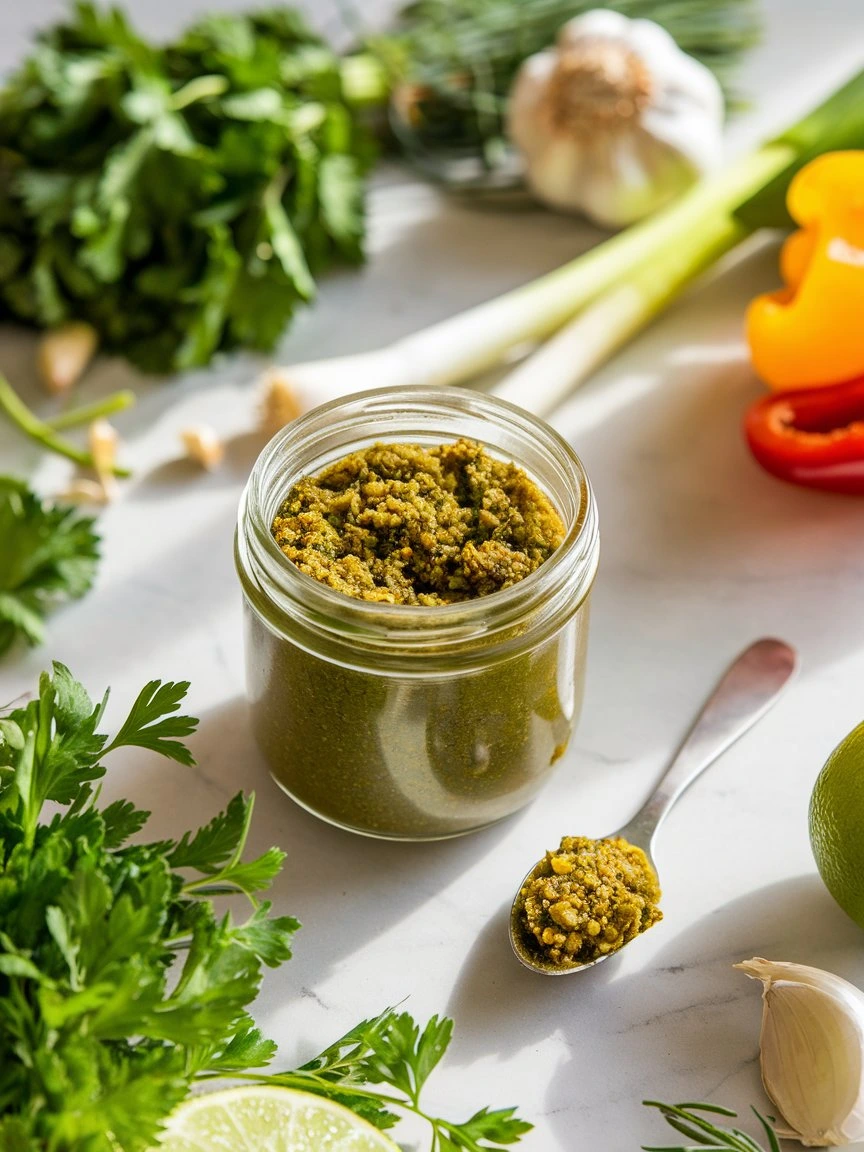
Green Seasoning is more than just a condiment; it’s a gateway to the heart of the Caribbean. I still remember the first time I truly understood its magic. It wasn’t just a burst of flavor; it was a moment that transported me to my family’s kitchen, where Green Seasoning was a tradition, a gathering of fresh herbs, bold spices, and memories shared over sizzling pans and laughter. This wasn’t just about food it was about home, culture, and connection. Green Seasoning is the star of this guide, where I’ll take you on a journey beyond a simple recipe.
What Makes Green Seasoning
Green Seasoning is an essential element in Caribbean cuisine, and I’m thrilled to share what makes Jamaican Green Seasoning so special. It’s more than just a blend of herbs and spices; it’s a cultural treasure. The aroma and taste of this seasoning make it a must have for anyone wanting to bring Caribbean flavors into their cooking.
Jamaican Green Seasoning holds deep cultural significance in the Caribbean. It’s a key component of cheap family meals and street food. Adding this seasoning to dishes like jerk chicken or vegetables brings out their best, elevating the flavors in every bite.
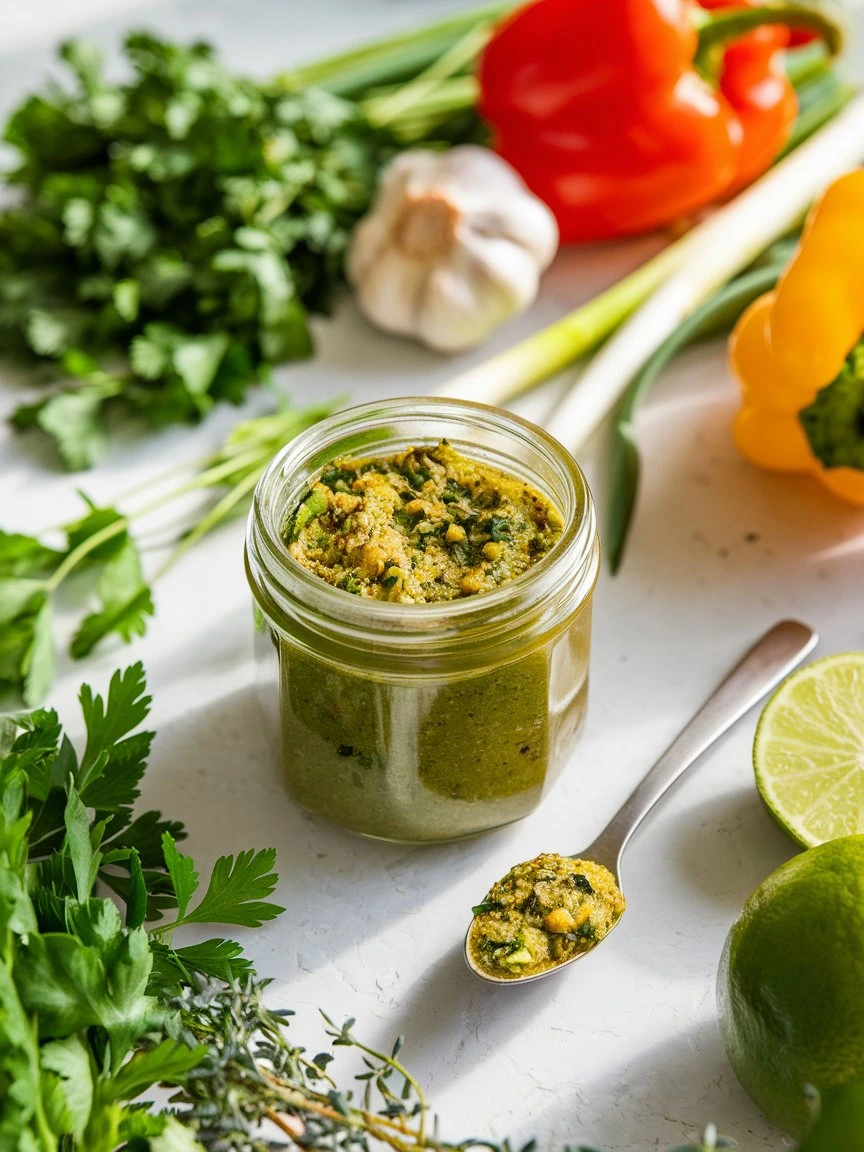
My Family’s Green Seasoning Memories
Green Seasoning was always a part of my childhood. Growing up, we had a jar of homemade Green Seasoning tucked in the back of the fridge. I’ll never forget the time we stored it in an old butter container big mistake. Every time someone opened the fridge, the sharp aroma of garlic and herbs hit us like a flavorful slap to the senses. We quickly learned that glass jars were the way to go, not just for locking in the smell, but for keeping those rich flavors fresh longer.
Key Ingredients for Green Seasoning
Green Seasoning is as unique as the hands that make it, but certain ingredients are essential. No two batches are ever exactly the same, every cook brings their own magic to it. But to capture the essence of authentic Caribbean Green Seasoning, these ingredients are non negotiable:
Fresh herbs: Thyme, scallions, parsley, and culantro (or cilantro if you can’t find it)
Spices: Garlic, black pepper, ginger
Peppers: Scotch bonnet (for heat) or milder substitutes like pimento peppers
Citrus: Fresh lime juice for brightness
How to Make Green Seasoning
Traditionally, Green Seasoning was ground by hand using a mortar and pestle a labor of love that unlocked deep flavors. These days, a blender or food processor gets the job done with ease.
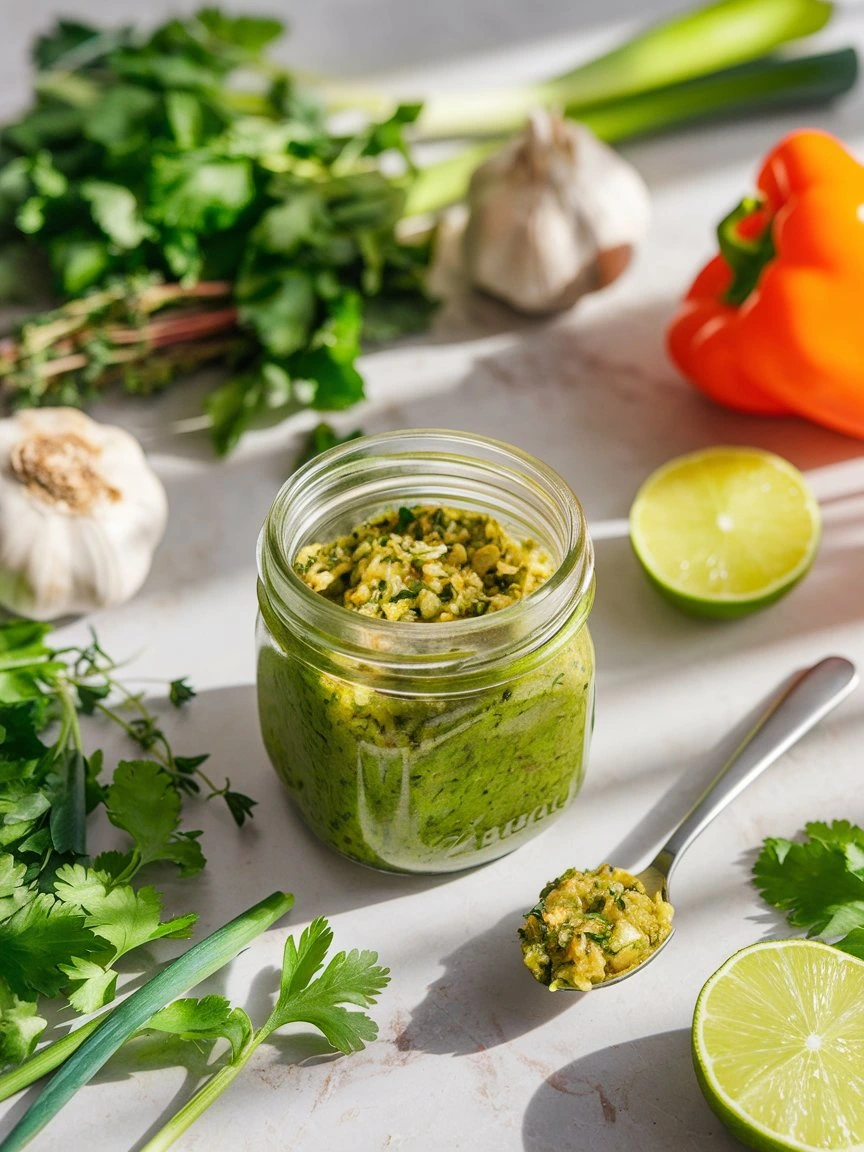
Step by Step Method
Chop Fresh Herbs: Start with thyme, scallions, and parsle chop them roughly to release their oils.
Add Spices: Toss in fresh garlic, ginger, and your peppers of choice.
Blend: Add lime juice and a splash of water (if needed) to blend until you get a smooth paste.
Taste and Adjust: Add more herbs, salt, or lime juice as needed.
Keep Your Green Seasoning Fresh
The secret to making your Green Seasoning last? Proper storage.
Refrigerate: Store in an airtight glass jar in the fridge for up to two weeks.
Freeze: Scoop into ice cube trays, freeze, and transfer to freezer bags for up to six months.
Pro tip: Freezing in small portions makes it easy to pop a cube straight into a hot pan or marinade no need to defrost!
Creative Ways to Use Green Seasoning
Once you’ve got your Green Seasoning ready, the possibilities are endless. Here are some of my favorite ways to use it:
- Marinades: Rub into chicken, pork, or fish for a flavorful Caribbean twist.
- Soups and Stews: Add a tablespoon to dishes like Caribbean fish stew or chicken soup.
- Veggie Boost: Toss with roasted vegetables like sweet potatoes or carrots for extra depth.
- Dips: Mix into sour cream or yogurt for a herby dip that’s perfect for veggies or chips.
Fixing Common Green Seasoning Mistakes
Even seasoned cooks run into issues when making Green Seasoning. Here’s how to troubleshoot:
- Too Thick? Add a splash of vinegar or lime juice.
- Too Thin? Add extra fresh herbs or a handful of chopped onions.
- Too Spicy? Stir in more fresh herbs or a bit of citrus to mellow the heat.
Why Every Kitchen Needs Green Seasoning
Green Seasoning isn’t just for Caribbean dishes it’s versatile, fresh, and brings an explosion of flavor to any cuisine. Whether you’re marinating meats, stirring it into soups, or just spreading it on toast, it’s the kind of kitchen staple that transforms ordinary meals into something extraordinary.
The Cultural Significance of Green Seasoning
Green Seasoning is deeply rooted in Caribbean culture. It’s not just a recipe; it’s a tradition passed down through generations. Each family has its own version, often guarded like a treasured heirloom. The process of making Green Seasoning is a communal activity, often involving multiple family members who gather to chop, blend, and taste. This communal aspect is a reflection of the Caribbean spirit, where food is a central part of social life and community bonding.
Regional Variations of Green Seasoning
While the basic ingredients remain consistent, each Caribbean island adds its own unique twist to Green Seasoning. In Trinidad and Tobago, for example, the seasoning is known for its fiery heat, thanks to the generous use of Scotch bonnet peppers. In contrast, the Green Seasoning from Barbados tends to be milder, with a greater emphasis on fresh herbs like parsley and thyme. Jamaica’s version often includes allspice, adding a warm, aromatic note that complements the fresh herbs and spices.
Health Benefits of Green Seasoning
Beyond its incredible flavor, Green Seasoning also offers numerous health benefits. The fresh herbs used in the seasoning are packed with vitamins and antioxidants. Thyme, for instance, is known for its antibacterial properties, while garlic is celebrated for its ability to boost the immune system. The inclusion of Scotch bonnet peppers not only adds heat but also provides a dose of capsaicin, which has been shown to have anti-inflammatory and metabolism boosting properties.
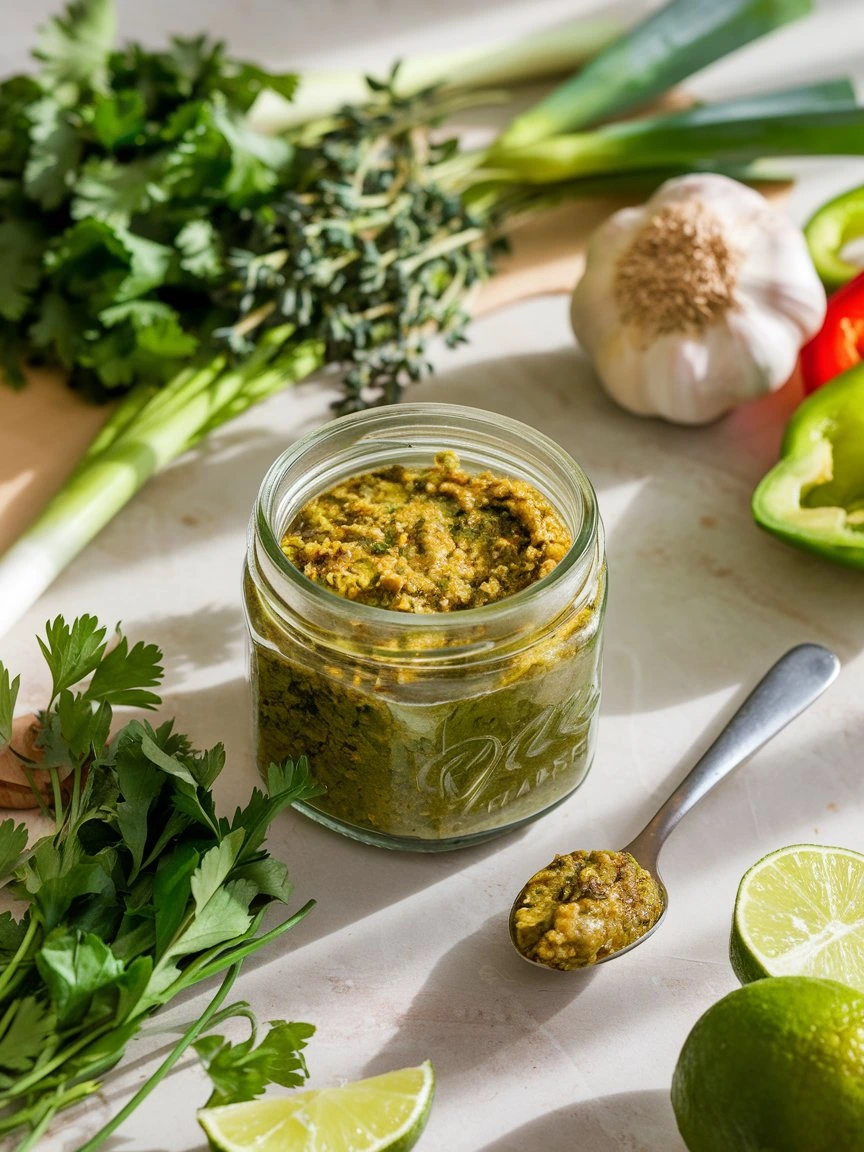
Green Seasoning in Modern Cuisine
While Green Seasoning is a traditional Caribbean staple, it has found its way into modern cuisine, both in the Caribbean and beyond. Chefs around the world are discovering the versatility of this vibrant blend, incorporating it into everything from gourmet dishes to street food. Its ability to enhance flavor without overpowering the main ingredients makes it a favorite among culinary professionals.
Pairing Green Seasoning with Other Cuisines
One of the most exciting aspects of Green Seasoning is its versatility. While it is a cornerstone of Caribbean cuisine, it pairs beautifully with a wide range of other culinary traditions. For example, a dollop of Green Seasoning can add a Caribbean twist to Italian pasta dishes, or it can be used to spice up a classic French ratatouille. Its fresh, herbaceous profile makes it a perfect complement to Mediterranean, Asian, and even Middle Eastern dishes.
Green Seasoning as a Culinary Heritage
Green Seasoning is more than just a recipe, it’s a part of the Caribbean’s culinary heritage. It represents the fusion of African, Indian, European, and indigenous influences that have shaped Caribbean cuisine. Each batch of Green Seasoning is a testament to the rich cultural tapestry of the region, a blend of flavors that tells the story of its people.
Caribbean Green Seasoning
Ingredients
- 1 Large onion Roughly chopped
- 16 Cloves garlic Peeled
- 6 trinidadian Pimento peppers or 1 red or green Cubanelle pepper
- 8 Green Onions, trimmed
- 4 Guyanese Wiri wiri peppers (or 1 Scotch bonnet or 2 to 3 habaneros)
- 6 Culantro Leaves
- Leaves from 10 sprigs parsley
- 16 Sprigs thyme
- 10 Basil leaves
Instructions
Prep the vegetables and herbs:
- Rinse the peppers, green onions and green herbs. Remove the stems from any of the hot peppers. If using Cubanelle peppers, remove stems and seeds. Roughly chop the green onions. Remove the leaves from the hard woody parts of the thyme sprigs. You can leave the tender parts of the stem with leaves intact
Add to the food processor and pulse:
- It’s best to do this in two parts. Add half of the ingredients to the food processor and pulse on high for a few seconds. Open the lid, then scrape the sides with a small spatula or spoon. Put the lid back on and pulse until the seasoning resembles a paste or thick marinade. Repeat with the remaining half of the ingredients.
Store:
- Store your seasoning in a glass jar with a tight lid. I like using a mason jar. Avoid using any plastic containers to store this in the fridge, as plastic can’t contain the seasoning’s strong aroma. To freeze, fill the crevices of an ice cube tray with spoonfuls of seasoning. Cover with a lid. If you do not have a matching lid for your tray then double wrap the top with plastic wrap to avoid freezer burn. Once frozen, pop each out and place in a freezer bag. The seasoning will keep in the fridge for up to 2 weeks and up to 6 months in the freezer.
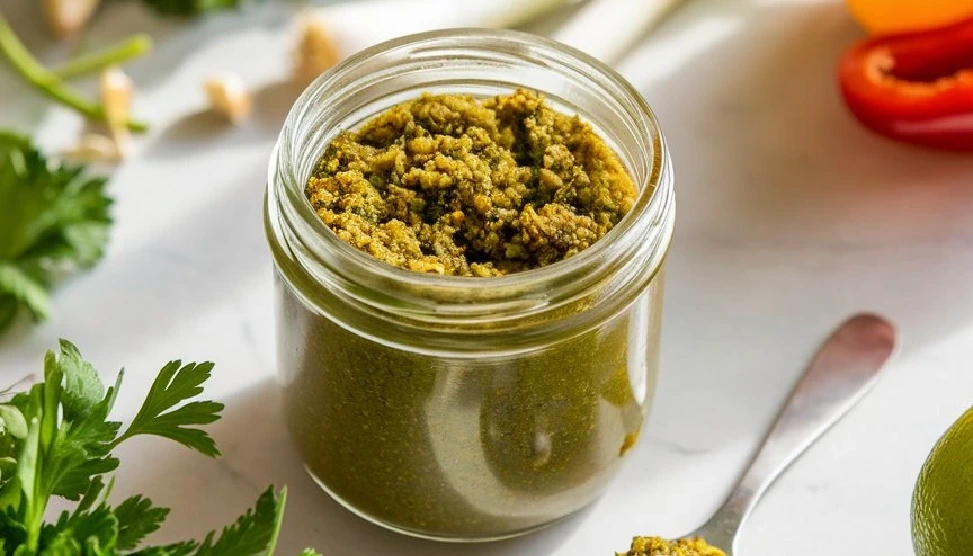
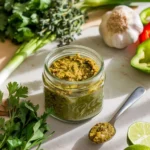

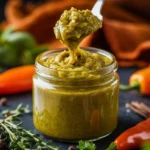
Pingback: Traditional Jamaican Green Seasoning
Pingback: Jamaican Rice and Peas
Pingback: Jamaican Escovitch Fish